Nomadic Community Gardens
is a temporary community project on Fleet Street Hill, off Brick Lane in East London’s Shoreditch. It has been almost five years when Jimmy and Junior had a dream about creating a community space.
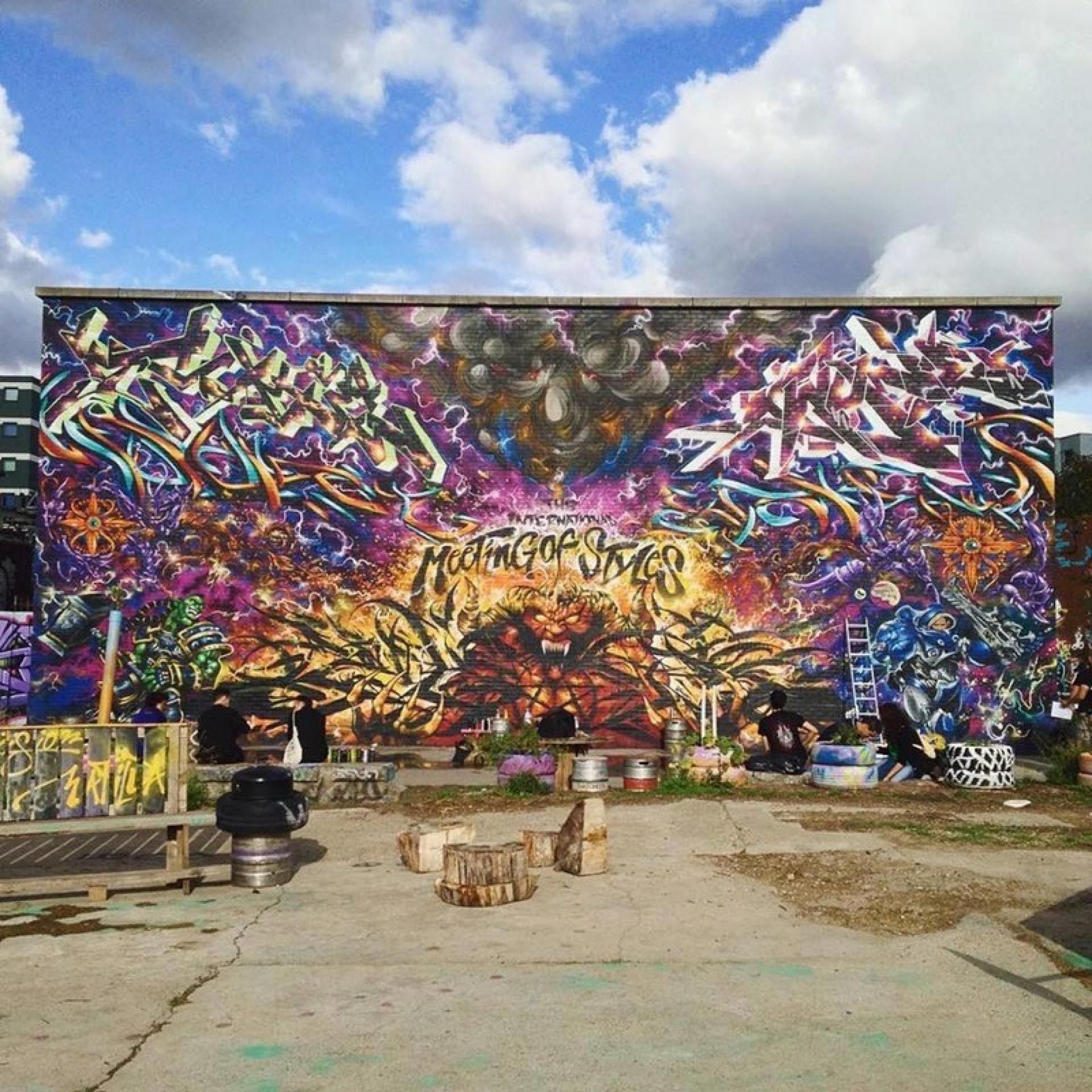
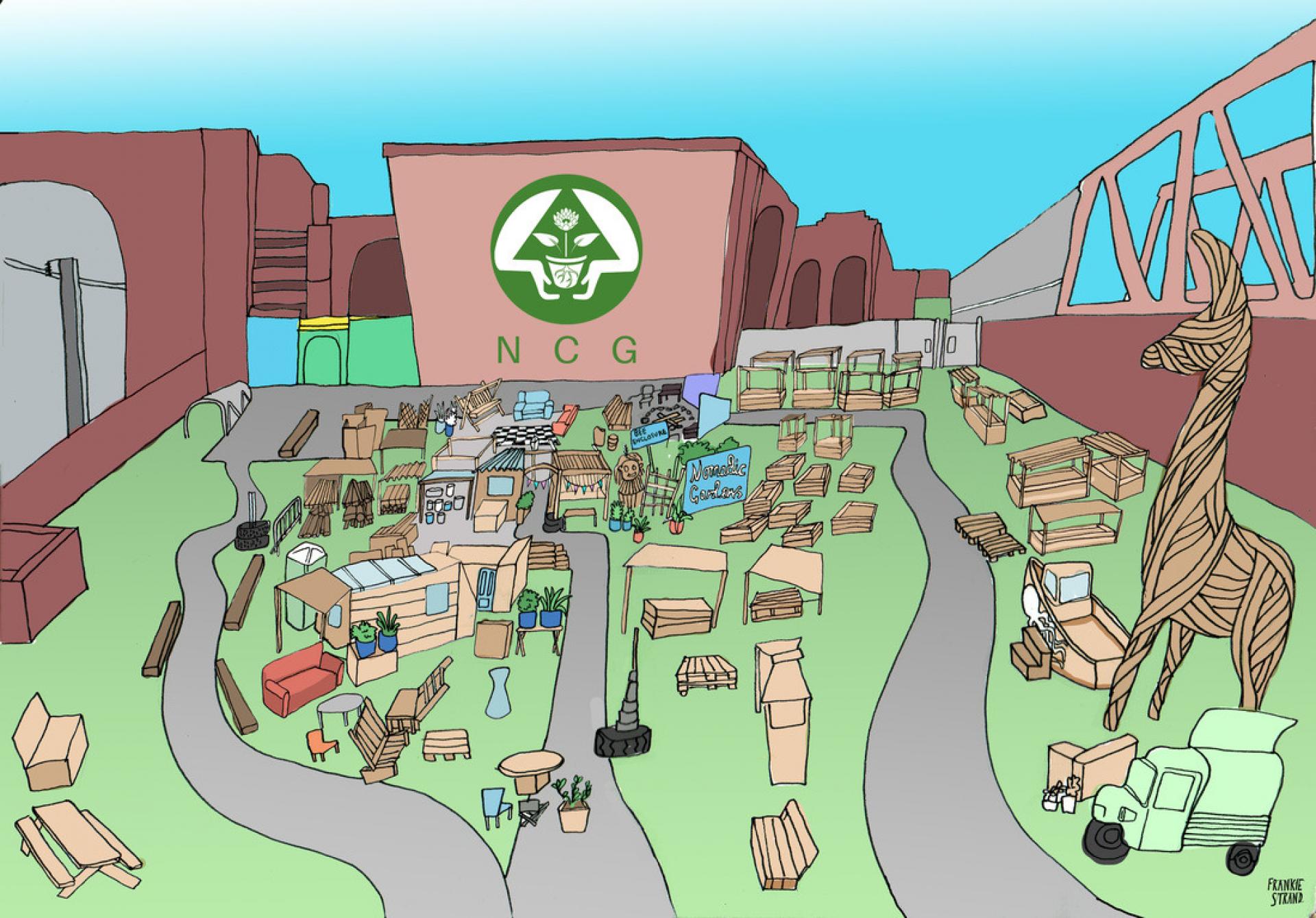
Source: Nomadic Community Gardens Web
After they presented it to landowners it attracts, inspires and brings together local people, artists, musicians and visitors, who come to the garden and create, explore, relax and most importantly meet each other.

The place is hidden from the street but visible from the railway above. Garden beds with vegetables, herbs and flowers, sculptures made of reused materials, benches everywhere, graffiti wall, open fireplace, playground, old piano, there is something for everyone to enjoy and feel a part of it! Nina Savič talked with Steve, a volunteer who has been involved since almost the very beginning.


Hayley at the Roving Cafe | Photo Nomadic Community Gardens Web
How did the project start?
So we are on a railway line now and this piece of land used to belong to Network rail. They would not entertain anybody using it before anything but as soon as they sold it to private landowners, Jimmy&J put in their plan. Nike wanted to move in here as well and some other people wanted to use this space but the property developers liked the idea of a community gathering space so they allowed it and we got a six months licence and then another six months and then it grew and it grew. It is kind of an indefinite licence but still in September we don’t know what is going to happen. As soon as they want us to go, we will say thank you very much and we will go.

So that’s the agreement between Nomadic community garden and landowners?
Absolutely, when they want the land back we give it to them. Because if we didn’t do that no other landowner would ever allow this to happen again and it is not a good precedent. We could probably fight and keep it but how selfish would that be? There is a big demand for places like this. This is unique, it is nowhere else– all these people who come in here, we all talk to each other. Out there, you would never talk to these people, you would never meet! Here we are all the same.. we are all in the same little planet.

Bee keeping at Community Gardens. | Photo Nomadic Community Gardens
How can one get involved?
Come here, be here, really it is just hang out and become a part of it. Some people come here and do nothing, some people come here and just do stuff. So Sherily (walks by with watery can) she is just a local person who came here and now she is head gardener, she is totally about gardening. This is a community space, so the community is everybody, everybody is welcome to come in here and if they want to do something that is not harmful or is a good thing..it can happen!

How did you get involved?
I used to walk my dog around here and this was just overgrown empty piece of land… My dog used to come here and I would have to wait an hour for him to come out. And one day these guys were here and the gates were open… and I just got involved, started building some of these beds. We started over in that corner there and worked all the way around.
How do you organize yourselves?
We tried having meetings but meetings don’t work. In general things roll along and Jimmy has final say because his name is on the list. There is a core group of about 3 - 5 people, everybody else is kind of in and out. You can’t have too many people and it is good to have someone who has final yes or no.

What would be for example unwanted activity?
Supposedly non political, non religious representing..everybody is equal there is no bias on any side of anything. We are also not allowed to build anymore buildings. We built too many of them already.
What are you going to do with the buildings, gardens and other furniture once you will have to move?
The reason why it is called Nomadic community garden is that it can be moved somewhere else. These garden beds for example are built on plastic pallets.. so they get lifted up and moved on a lorry to the next garden space. Some of them we will lose because of rots but pretty much everything can be dismantled, flat packed and put away.

Where do you get the materials from?
Most of this wood that garden beds are made of came from a company that deals with recycling art packaging..We also invested a bit of money to scaffold boards. After we bought a van, we picked up pallets and other useful things from the streets. We had a lot of rubbish here at some point. The piano came from a squat when they got evicted and they couldn’t take it with them..it has been here for about 4 years. Solar panels were given to us. People would turn up here and asking do you want this or that? All the stuff here was donated by people. Not so much now but when we started the van was crucial to bring things here.
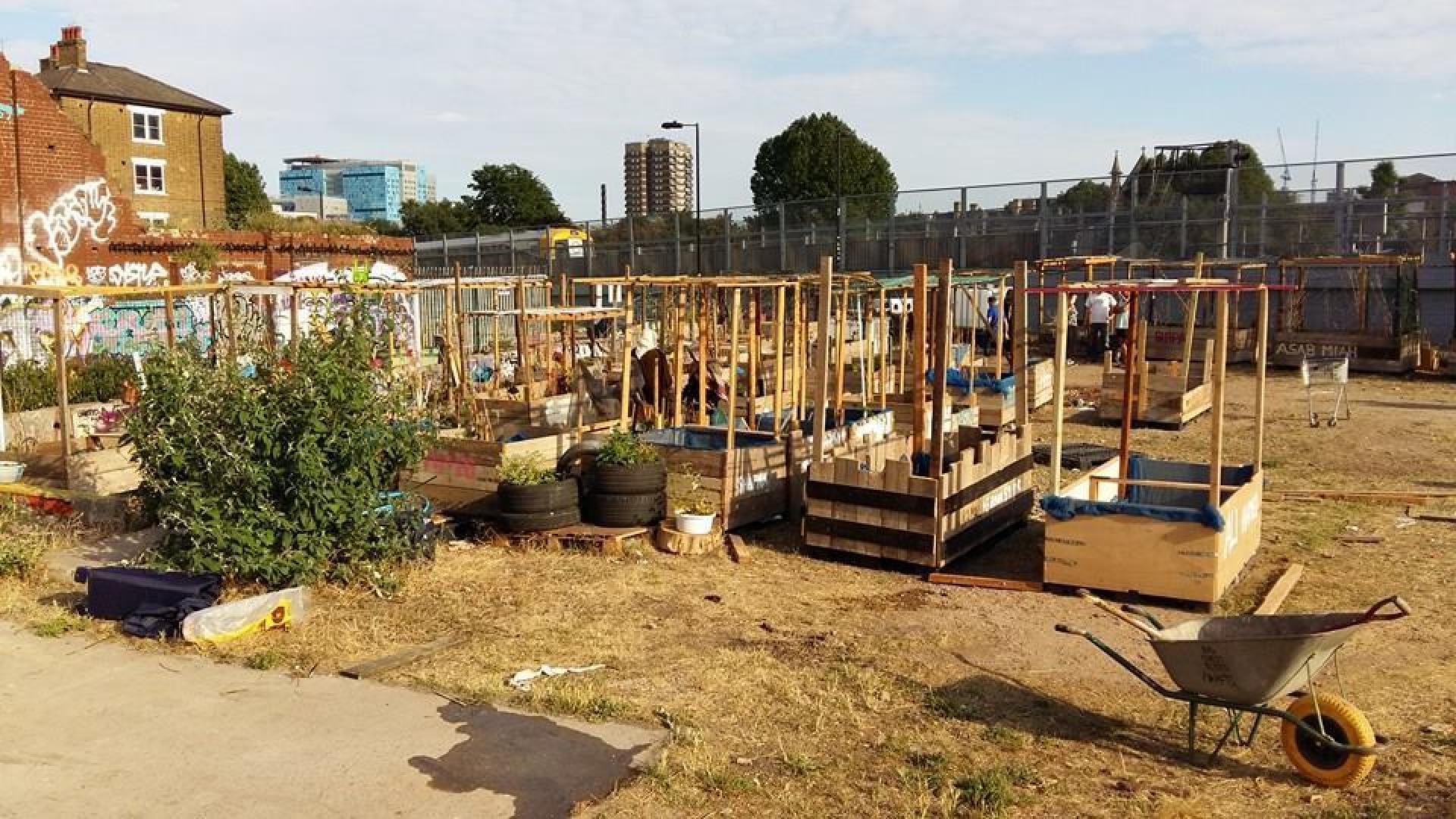
What are the main expenses of the project and how do you finance them?
On Sunday when we have our main day, we have music, people doing food, if we can get a licence from the council we have a bar and we have a guy at the door with a bucket collecting contributions. Sometimes we have or host other weekend events but every Sunday there is our event and something going on. It started off with 20 people around the fire in the rain, playing the guitar and piano.. and then it grew into a Sunday jam night. People could come with their own instruments. The money that is gained from Sunday is used to pay the public liability insurance, the van, and it provides also some money for local people who spent a lot of time and effort here… You cannot make a living out of coming here, but you can get some quids a day. Mondays we are closed. If you come here on Monday, you come here to work..and after we buy some food, have a barbecue, some beers.

Another way of making money here is hiring our place to film crews or photoshootings..Lara Croft was filmed here and some big music videos as well.
How busy does it get on Sundays?
Officially we are never more than 499, including staff..but probably it is about 800-900, maybe even 1000.. It can get incredibly busy! But there is always a good atmosphere and never any trouble. What we used to say when we started with – if you build it they will come and hear four and a half years later people have come. And it has been through many changes, turmoils, arguments… but now is at its peak, I think. We got busy after about two years. First time we had a day when it was like one in one out was 2nd birthday. And now Google tells you to come here! We are even in inflightmagazins, like Easy jet ‘Top cool things to do in London’.
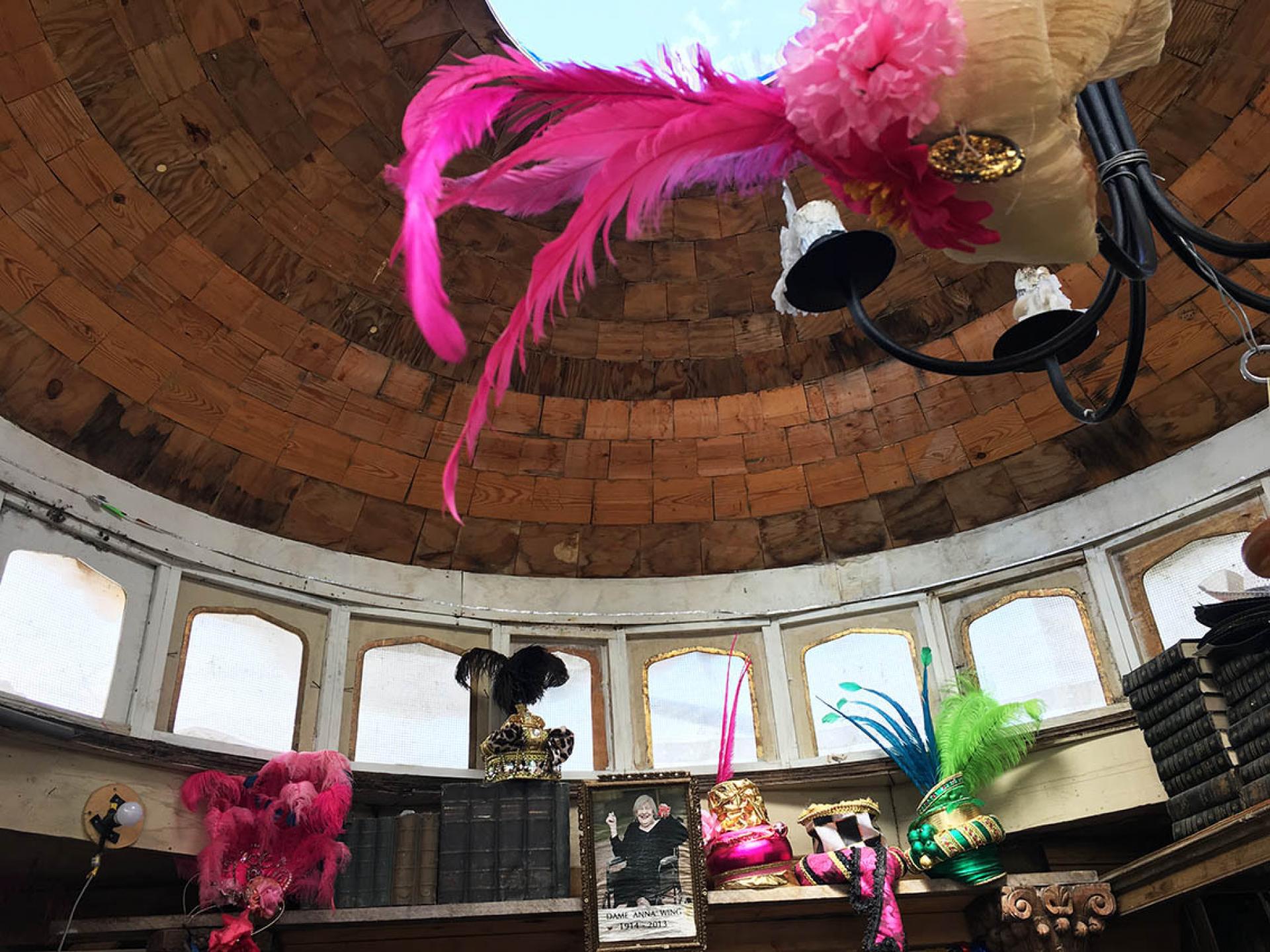
What about the infrastructure - water, electricity, waste and toilets?
We collect rainwater that feeds all the plans. The containers by the gate we fill up with water from hydrants. We produce electricity with solar panels and we have generator for the sound system we use for the events. We have four port-a-loos that we get cleaned every Thursday.
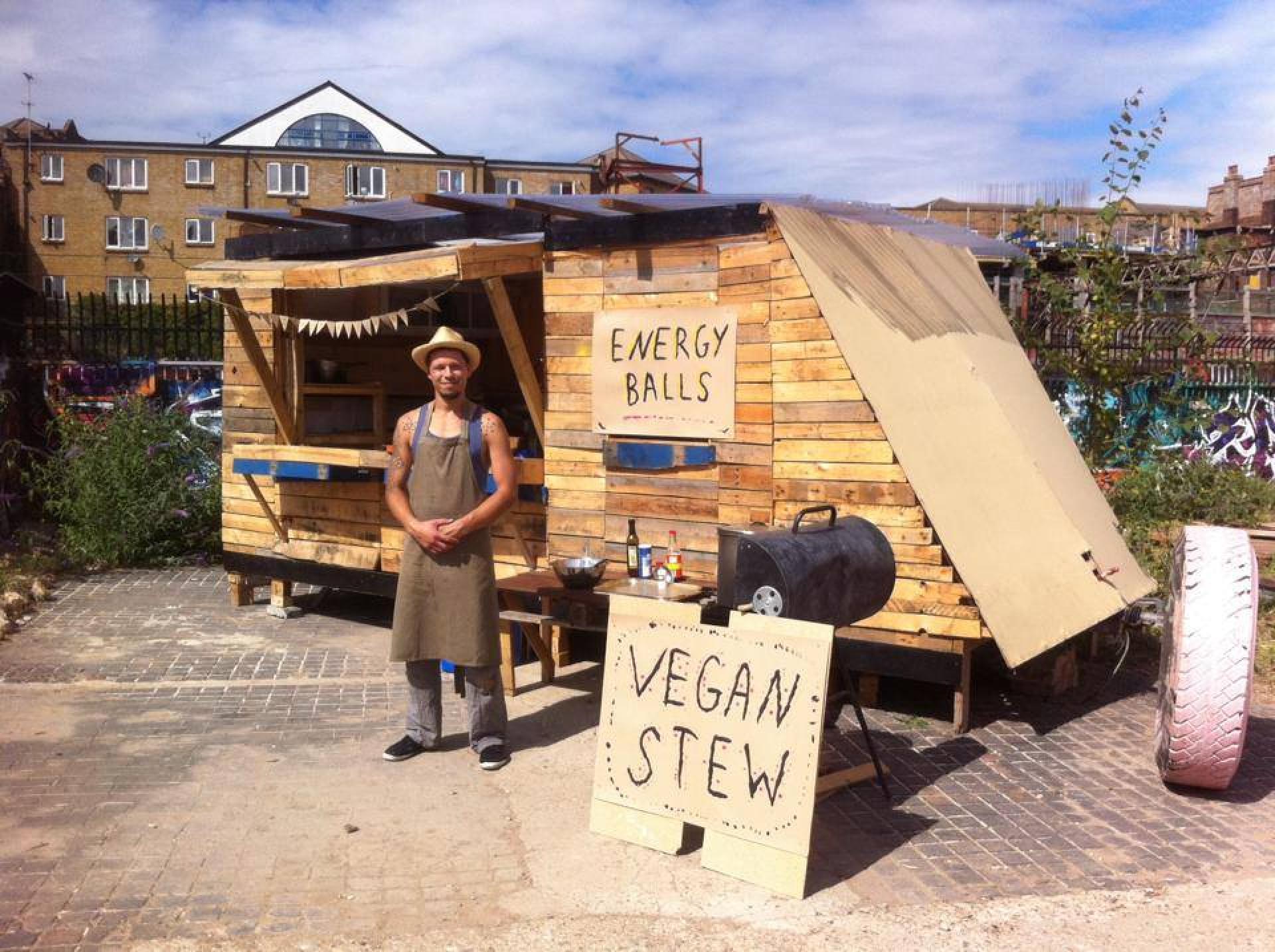

Street Food | Photo Nomadic Community Gardens Web
We also have a piss wall, with filtration system with charcoal. We have to pay for rubbish to be taken away..we accumulate a lot of rubbish. We used to be able to sell the aluminium cans but they are not taking them anymore. Anything we can burn (cardboard, wood..) we burn and the rest we pay the council to take it away. We try to tell people to take their rubbish away but sure we don’t want that they take it away and dump it in the park however I think people are getting much more respectful.

Would you say that if the place is clean and looks like someone is taking care of it, also people take care of it more likely?
There is kind of self police here. People are very proud of what they have created so they keep an eye on it.
What would you say is a general rule for this place, is there any?
Play nice..it’s a bit hippy, it’s a bit love&peace but yes that’s basically it..to be nice to each other!
—
text and photo by Nina Savič
Nomadic Community Gardens, Fleet Street Hill, London E2 6EE
From Brick Lane, go to Allen Gardens, go left through the underpass and you will see us. Alternatively, cross the footbridge from Cheshire Street and you will see a door opposite the bottom of the steps. We are located in the space between the two overground lines.
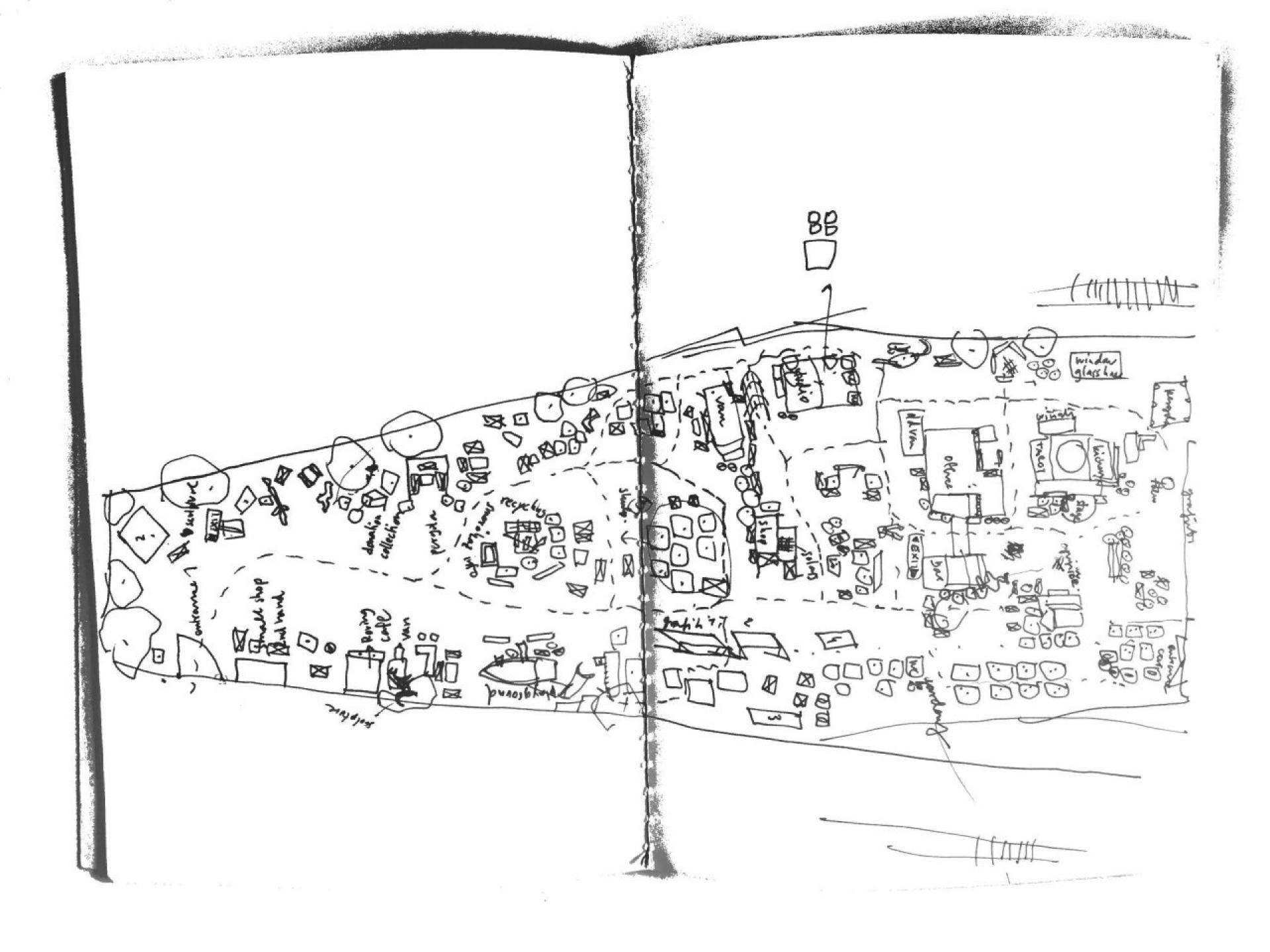
Opening hours Tuesday-Thursday 9am-6pm, Friday 9am-8pm, Saturday & Sunday 9am-9pm. Closed on Mondays